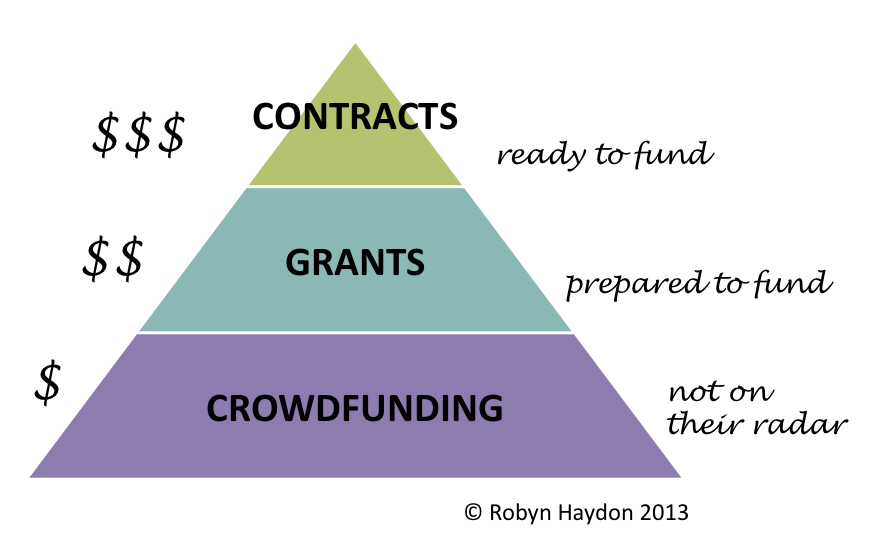Crowdfunding offers a new model of audience engagement that contract bidders can learn a lot from. Here are my top four lessons from the most successful crowdfunders.
- Keep reminding the customer of what’s great about your offer. In crowdfunding, this means up to seven email follow-ups. In your proposal, this means reiterating your most compelling points and spinning them in different ways, not just burying them in the Executive Summary.
- Make it real. Crowdfunding projects that are supported by engaging video and visuals outsell other projects by a factor of 10 to 1. Successful crowdfunder Chris Thomas, who raised $110,000 through Kickstarter against a target of $10,000 to bring “sleep earmuffs” to market (yes, really), says that there is a direct correlation between “the quality of the video and the bids, and what you end up raising”. Think about how you can elevate your pitch above the usual boring wasteland of uninterrupted words.
- Make it stand out. In crowdfunding, successful projects tap into needs that customers didn’t even know they had. For example, Patient Zero raised $230,000 through Pozible to stage real life zombie battles, 23 times more than the $10,000 it was originally asking for. In a bid, you’re battling for attention in a crowded marketplace; if everyone can tick all the boxes in the RFT then what makes you any different? Be bold, be an expert, and show the customer a compelling vision of their future working with you.
- Give something extra. Crowdfunding isn’t charity, and successful crowdfunders recognise that people want to get something back to their investment. A while back, I invested $100 through Pozible in a community project that eventually raised its target of $10,000. In return, I was offered email updates, an invitation to the launch, and my name on the sponsor’s ‘roll of honour’. Rewards don’t have to relate to the project at hand; offer to share your expertise for free on another issue that you know the client is struggling with.


